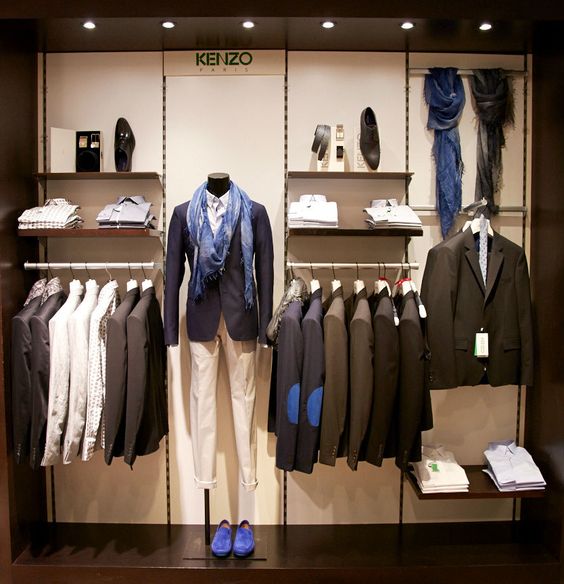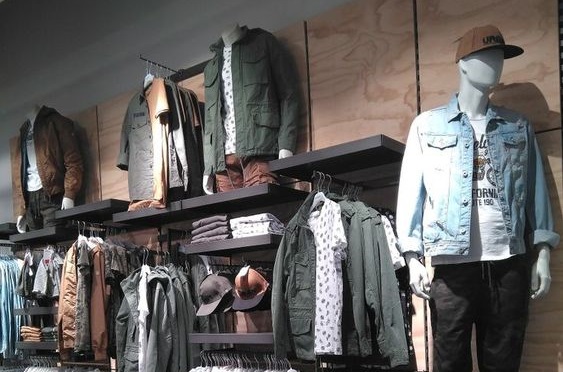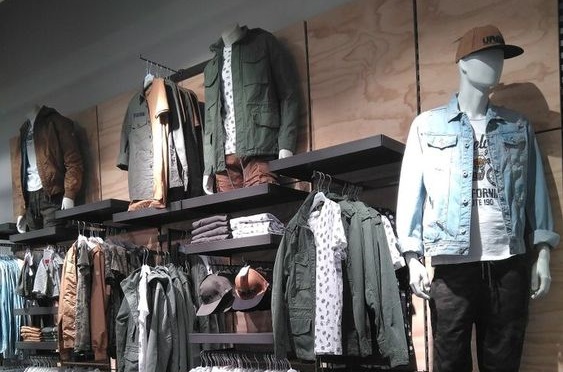
“Should I hang skirts, shirts, and jackets separately? Or maybe it is better to range clothes by color?”
Today a teacher of our course “Visual Merchandiser“ Riccardo Carrapa will tell you how to design a clothing store, to create corners and whether it is worth hanging clothes by color.
What are the corners?
A corner (sometimes it’s called an “island”) is a place in a clothing store where a separated story is presented.
It has its own assortment, style, focus on the target audience, color scheme, equipment.
Corners can be also called sub-departments of the store.
Example of the corner in classical trendy style
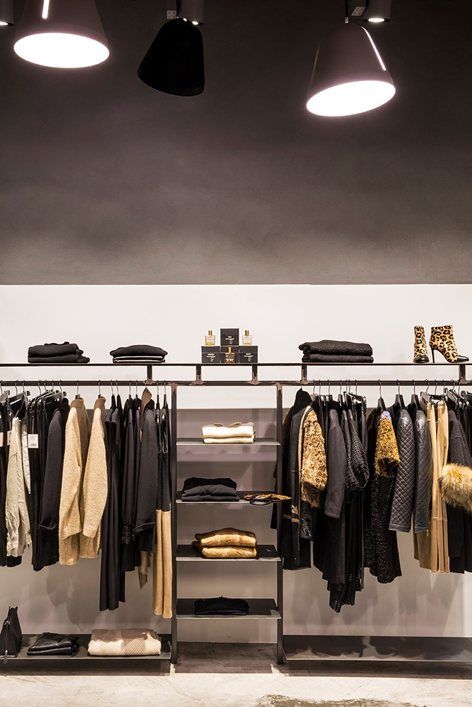
The number of topics or corners can be different: depending on the assortment and the area of the store. Usually there should not be less than three of them, otherwise the whole idea become uneven. Two corners – Ok, but at least three corners are better.
Example: You have a women’s clothing store
Incorrect design of a clothing store where there are no corners:
All things are hung by colors. There are black colors on the one wall, green shades on the other wall, and red shades in the center on the hanger.Incorrect design of a clothing store where there are no corners:
All things are hung up by assortment groups. There are skirts on the one wall, trousers on the other wall, in the center – coats and jackets.Proper design of a clothing store where there are corners:
On the left wall there are things in the classical style (jackets, trousers, blouses, skirts)
On the right wall there are things in a romantic style.
In the center on the hanger there are things in the evening style.
Why do we need corners?
The first goal is to help the client to find the departments
Example:
A woman who works in a bank came into the store. The main part of her wardrobe is business clothes with a strict silhouette.
If she sees a corner in the store with classic things, a black and white color scheme, then she will immediately go there.
If all things are “smashed” around the store: beach mini-skirts hang next to the classic skirt, then she will have the feeling that this clothing is not close to what she needs.
The second goal is to increase the average check
Imagine that the same woman from the bank came to the store for a classic blouse. She goes to the corner with classic clothes. There are trousers, a skirt, a vest, jewellery and a bag hanging next to the blouse. Everything goes well together. A woman will definitely want to try on not only a blouse, but also additional things that combine so well with each other.
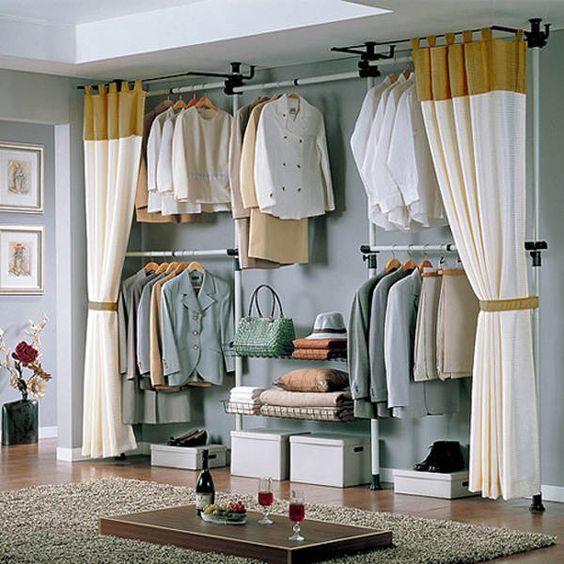
How to create corners
There are many different ways to create corners. Including how to choose the right color scheme for each corner.
But the simplest scheme would be to divide the store into corners according to the styles and situations which close to the customers.
For example:
1 variant of dividing into corners
– office clothes
– casual clothes
– evening wear2 variant of dividing into corners
– romantic style
– classic style
– fashion style
Classical style corner – example
Casual style clothes – example
